A multiplicative inverse for a (mod n)
Modular Arithmetic
Definition 5
Let n ∈ N and let a,b ∈ Z. We say that a is congruent to b modulo n
if n|(a−b).
We write this as a ≡ b (mod n).
Theorem 2
Let n∈N and let a,b∈Z. TFAE:("The Following Are Equivalent")
1. a≡b(modn).
2. a and b leave the same remainder when divided by n.
3. a=b+kn for some k∈Z.
Theorem 3
Let a1,a2,b1,b2 ∈ Z, and let n ∈ N.
Suppose, further, that a1 ≡ a2 (mod n) and b1 ≡b2 (mod n). Then
1. a1 + b1 ≡ a2 + b2 (mod n).
2. a1b1 ≡ a2b2 (mod n).
3. a1 − b1 ≡ a2 − b2 (mod n).
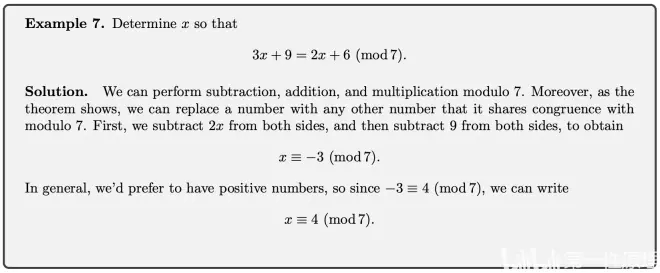
Ok, this is pretty great, but it’s missing one operation! How do we perform division modulo n? Or even, can we?


As a reminder of how we defined division way back when, we had the following definition for the number 1/n :

Definition 8
Let n ∈ N and let a ∈ Z. We say that u is
if au ≡ 1 (mod n).
So, in Example 8, we showed that 5 is a multiplicative inverse for 3 modulo 7.
Let’s take a look at another example:
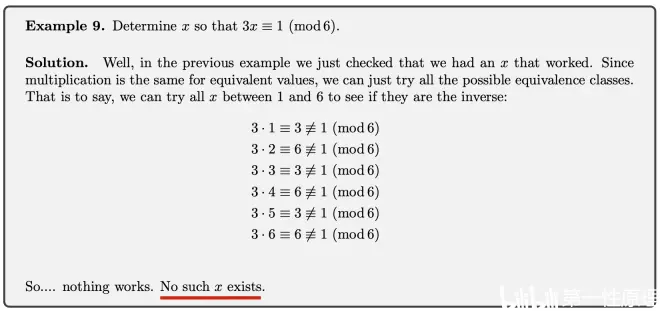
So sometimes inverses exist, and sometimes they don’t.

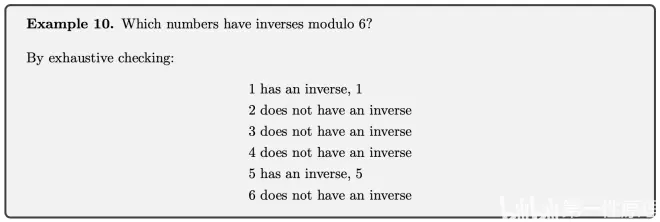
There are common factors between 6 and (2, 3, 4,6).
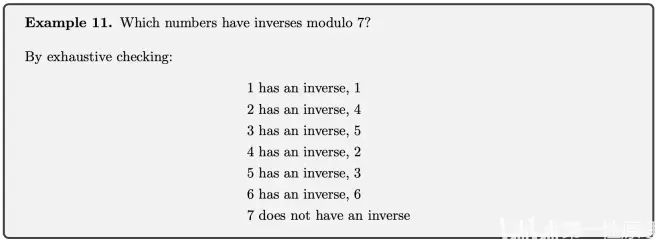
There are common factors between 7 and 7.
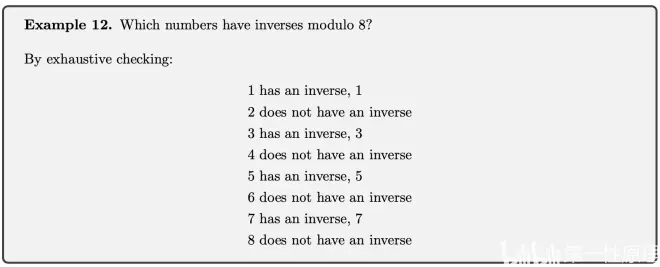
There are common factors between 8 and (2,4,6,8).
Examining the above 3 examples, you might notice a pattern: multiplicative inverses do not exist anytime the number we are interested in shares a factor with the modulus. This, in general, is the feature we are looking for.
Theorem 4.
Let n ∈ N and a ∈ Z. Then a has a multiplicative inverse modulo n
if and only if a ⊥ n.
example:
1 ⊥ 6
5 ⊥ 6
1 ⊥ 7
2 ⊥ 7
3 ⊥ 7
4 ⊥ 7
5 ⊥ 7
6 ⊥ 7
1 ⊥ 8
3 ⊥ 8
5 ⊥ 8
7 ⊥ 8

